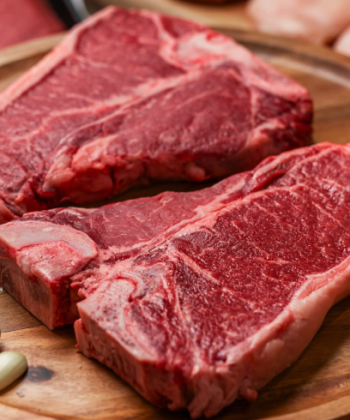
In today’s culinary landscape, where sustainability and authenticity have become central to the dining experience, creating a market-driven menu is more than just a trend—it’s a smart business strategy. Emphasizing locally sourced and seasonal ingredients can enhance the appeal of your dishes and reflect a deep respect for the environment and local communities. One star ingredient that exemplifies this approach is wild caught seafood, which brings a unique flavor and freshness to any menu. In this article, we’ll explore the benefits of crafting a market-driven menu, provide practical tips on sourcing and rotating seasonal ingredients, and discuss how to tell compelling stories around your dishes that engage and captivate customers.
Benefits of a Market-Driven Menu
A market-driven menu doesn’t just appeal to the modern diner; it also offers substantial benefits to your business. When you source ingredients locally and seasonally, you get the freshest produce at its peak, often at a lower cost due to reduced transportation and handling fees. This freshness translates directly into flavor, making dishes taste vibrant and distinctive. Additionally, supporting local farms, fisheries, and producers builds a sense of community and goodwill, which can boost your brand’s reputation as a socially responsible business.
Seasonal Seafood: A Game-Changer
Integrating wild caught seafood into your market-driven menu provides both a culinary and marketing advantage. Wild caught seafood is celebrated for its superior taste, texture, and nutritional value compared to farmed alternatives. By including seasonal seafood options, you not only introduce variety but also underscore a commitment to sustainability, as wild stocks are often managed with an eye toward ecological balance.
Sourcing and Rotating Seasonal Ingredients
Finding the freshest ingredients means knowing where to look and when to buy. Adapting your menu to reflect seasonal changes brings vibrant flavors to your dishes and keeps customers returning for new experiences.
How to Find Reliable Local Suppliers
The key to a successful market-driven menu is forging strong relationships with local suppliers. Start by visiting farmers’ markets, joining local food networks, or reaching out to community-supported agriculture (CSA) programs. Establish partnerships with local fishmongers who specialize in wild caught seafood. Building trust with these suppliers is crucial, as it ensures consistent access to the best quality ingredients when they are at their freshest.
Planning Your Menu Around Seasonal Availability
To maximize the impact of a market-driven menu, plan your dishes around what is locally and seasonally available. Use a seasonal produce calendar to determine which fruits, vegetables, and seafood are at their peak throughout the year. For example, wild caught seafood like Alaskan salmon or Gulf shrimp might be more abundant in certain months, allowing you to feature them prominently in your menu when they are freshest. Rotating dishes based on the season not only keeps your offerings dynamic and exciting but also encourages repeat visits from customers eager to try the latest creations.
Crafting Stories That Engage Customers
Great dishes aren’t just about taste; they’re about the story they tell. Capturing the journey of your ingredients from their source to the plate can create a deeper connection between your customers and your cuisine.
Telling the Story of Your Ingredients
Storytelling is a powerful tool in menu design. Share the journey of your ingredients from farm or sea to table. Highlight the fishermen who caught your wild seafood or the farmers who grew your heirloom tomatoes. When customers know the backstory of the dishes they are eating, it creates a deeper connection to the food and the establishment. Use menu descriptions, social media, and your website to convey these stories, emphasizing the human element behind each ingredient.
Creating Seasonal Specials and Events
Seasonal specials are a fantastic way to showcase market-driven offerings. Consider hosting events like “Seafood Sundays” where the menu focuses on wild caught seafood, or “Farm-to-Table Fridays” that celebrate local produce. Seasonal events add a layer of excitement and exclusivity, encouraging customers to dine with you more frequently. This strategy also allows you to test new dishes and gauge customer interest, providing valuable feedback for future menu adjustments.
Tips for Successful Implementation
The best menus don’t just happen—they are carefully planned and thoughtfully executed. Embracing flexibility and clear communication helps ensure your market-driven menu is both appealing and effective.
Communicating Your Commitment to Quality
Make your commitment to local and seasonal sourcing visible. Train your staff to communicate the benefits of your ingredients, from their nutritional value to the environmental impact. Include details on your menu or in table tents about why you choose wild caught seafood over other options. This transparency builds trust and sets your establishment apart as one that prioritizes quality and sustainability.
Adapting to Changing Seasons and Customer Preferences
Flexibility is key to a market-driven menu. Be prepared to adapt as seasons change and ingredient availability fluctuates. Keep an eye on customer preferences and trends; for instance, if a particular wild caught seafood dish becomes popular, consider ways to adapt or expand upon it even when that seafood is out of season. Use alternative, yet similar, seasonal ingredients to maintain consistency in taste and quality.
Conclusion
Creating a market-driven menu that emphasizes seasonal and locally sourced ingredients offers a multitude of benefits. From enhancing the flavor and freshness of your dishes to building a brand that customers trust and respect, the advantages are clear. By integrating wild caught seafood and other seasonal ingredients, rotating your menu offerings, and telling compelling stories about your food, you can create a dining experience that is memorable and meaningful. As you look to the future, remember that the key to success lies in understanding the value of each ingredient, its seasonality, and its story—elements that make every meal a celebration of place and time.


